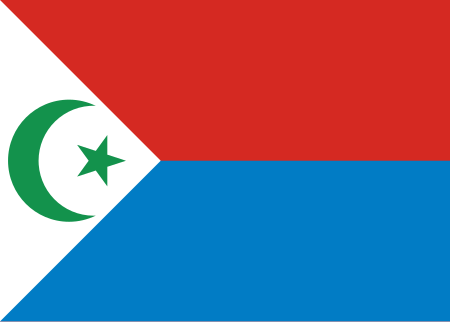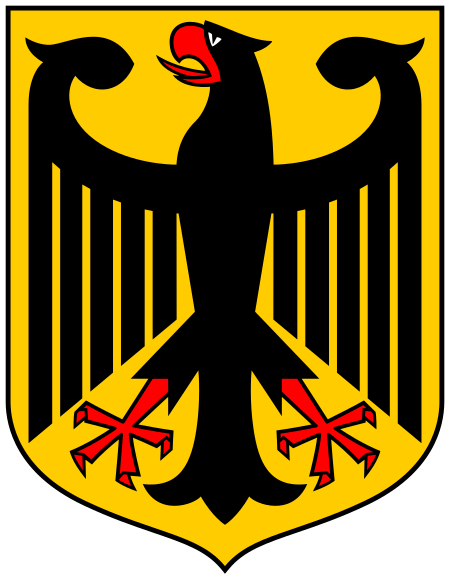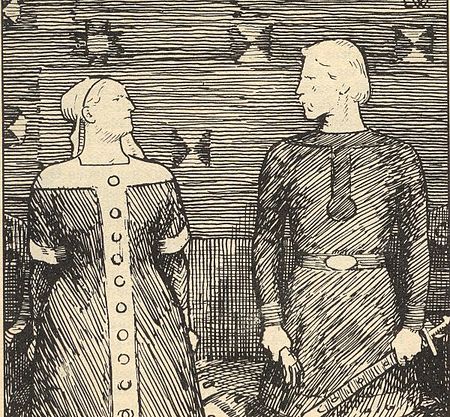Politics of Yemen
|
Read other articles:

King of Babylon Itti-Marduk-balāṭuKing of BabylonStone tablet (type of kudurru), of the time of Itti-Marduk-balāṭu recording sale of arable land.[i 1]Reignc. 1135–1138 BC[a]PredecessorMarduk-kabit-aḫḫēšuSuccessorNinurta-nādin-šumiHouse2nd Dynasty of Isin Itti-Marduk-balāṭu, inscribed mKI-dAMAR.UTU-DIN[b] “with Marduk (there is) life,” c. 1135–1128 BC, was the 2nd king of the 2nd Dynasty of Isin that ruled over Babylon, and he was the son of its fo…

追晉陸軍二級上將趙家驤將軍个人资料出生1910年 大清河南省衛輝府汲縣逝世1958年8月23日(1958歲—08—23)(47—48歲) † 中華民國福建省金門縣国籍 中華民國政党 中國國民黨获奖 青天白日勳章(追贈)军事背景效忠 中華民國服役 國民革命軍 中華民國陸軍服役时间1924年-1958年军衔 二級上將 (追晉)部队四十七師指挥東北剿匪總司令部參謀長陸軍總�…

Stadio Angelo MassiminoCibali Informazioni generaliStato Italia UbicazionePiazza Vincenzo Spediniquartiere CibaliCatania Inizio lavori1935 Inaugurazione1937 Ristrutturazione1991, 1997, 2022-2024 ProprietarioComune di Catania ProgettoRaffaele Leone Intitolato aAngelo Massimino Informazioni tecnichePosti a sedere20.016 CoperturaTribuna A Pista d’atletica8 corsie Mat. del terrenoErba Dim. del terreno105 m × 68 m Uso e beneficiariCalcioCatania (1937-oggi)Massiminiana (1959-1976)Atl…

MTA Regional Bus OperationsMTA Regional Bus Operations menyediakan jasa bus di tenggara New York melalui merek MTA New York City Bus, MTA Long Island Bus, dan MTA Bus.[1]IndukMetropolitan Transportation Authority (New York)DidirikanMay 7, 2008[1]Kantor pusat2 Broadway, New York, NY 10004-2207LokalWilayah metropolitan New YorkWilayah layananNew York City dan Nassau County(Nassau County sampai 31 Desember 2011)Jenis layananLokal, perhentian terbatas, angkutan cepat bus, dan jasa bu…

Guerra libico-ciadianaCarta del CiadData1978 - 1987 LuogoCiad, Libia meridionale EsitoVittoria ciadiana Modifiche territorialiil Ciad riguadagna il controllo della striscia di Aouzou Schieramenti Libia Legione islamica[1] FROLINAT GUNT (1979-1986) OLP (1987)[2][3] Supporto da: Unione Sovietica Germania Est Ciad: FAT (fino al 1982) FAN (fino al 1983) FANT (dal 1983) Francia GUNT (dal 1986)Supporto da: Stati Uniti Egitto Sudan&#…

この記事は検証可能な参考文献や出典が全く示されていないか、不十分です。出典を追加して記事の信頼性向上にご協力ください。(このテンプレートの使い方)出典検索?: コルク – ニュース · 書籍 · スカラー · CiNii · J-STAGE · NDL · dlib.jp · ジャパンサーチ · TWL(2017年4月) コルクを打ち抜いて作った瓶の栓 コルク(木栓、蘭&…

此條目可能包含不适用或被曲解的引用资料,部分内容的准确性无法被证實。 (2023年1月5日)请协助校核其中的错误以改善这篇条目。详情请参见条目的讨论页。 各国相关 主題列表 索引 国内生产总值 石油储量 国防预算 武装部队(军事) 官方语言 人口統計 人口密度 生育率 出生率 死亡率 自杀率 谋杀率 失业率 储蓄率 识字率 出口额 进口额 煤产量 发电量 监禁率 死刑 国债 外…

Historic cemetery in Jefferson County, Kentucky United States historic placeCave Hill CemeteryU.S. National Register of Historic Places Main entrance on Baxter AvenueLocation701 Baxter AvenueLouisville, KentuckyCoordinates38°14′44″N 85°42′58″W / 38.2456°N 85.7161°W / 38.2456; -85.7161Area296 acres (1.20 km2)Built1848–1913Architectural styleCorinthian, VictorianWebsitecavehillcemetery.comNRHP reference No.79000999Added to NRHP1979 Cave Hil…

Sufi ceremony performed as part of the meditation and prayer For other uses, see Sama (disambiguation). Sema redirects here. For other uses, see Sema (disambiguation). SamaWhirling Dervishes in Istanbul, TurkeyMediumSinging, playing instruments, dancing, recitation of poetry and prayersOriginating cultureSufi Mevlevi Sema CeremonyUNESCO Intangible Cultural HeritageCountryIranReference00100RegionEurope and North AmericaInscription historyInscription2008 (3rd session)ListRepresentative Sama (Turki…

Questa voce sugli argomenti calciatori camerunesi e calciatori equatoguineani è solo un abbozzo. Contribuisci a migliorarla secondo le convenzioni di Wikipedia. Segui i suggerimenti dei progetti di riferimento 1, 2. Narcisse Ekanga Nazionalità Guinea Equatoriale Altezza 176 cm Calcio Ruolo Centrocampista Termine carriera 2018 CarrieraSquadre di club1 2008-2012 TP Mazembe? (?)2012-2014 Al-Hilal Omdurman? (?)2014-2015 Leones Vegetarianos? (?)2015-2016 1960 Silopispor? (…

本表是動態列表,或許永遠不會完結。歡迎您參考可靠來源來查漏補缺。 潛伏於中華民國國軍中的中共間諜列表收錄根據公開資料來源,曾潛伏於中華民國國軍、被中國共產黨聲稱或承認,或者遭中華民國政府調查審判,為中華人民共和國和中國人民解放軍進行間諜行為的人物。以下列表以現今可查知時間為準,正確的間諜活動或洩漏機密時間可能早於或晚於以下所歸類�…

Yaoundé Héraldique De haut en bas, de gauche à droite : le Monument de la réunification, la Cathédrale Notre-Dame-des-Victoires, la Place de l'indépendance, le Musée national et le Centre Pasteur. Administration Pays Cameroun Région Région du Centre Département Mfoundi Maire Luc Messi Atangana Démographie Population 2 765 000 hab. (est. 2015) Densité 9 095 hab./km2 Géographie Coordonnées 3° 52′ nord, 11° 31′ est Altitude 750&#…

Defunct luxury automobile company For other uses, see Packard (disambiguation). PackardFormerlyPackard Motor Car CompanyCompany typePrivate (1899–1954)IndustryAutomotiveFounded1899FoundersJames Ward PackardWilliam Doud PackardGeorge Lewis WeissDefunct1962; 62 years ago (1962)FateMerged with Studebaker to form Studebaker-Packard in 1954; 'Packard' brand name dropped in 1959SuccessorStudebaker-PackardHeadquartersDetroit, Michigan, U.S.Key peopleHenry B. JoyProductsautomobiles P…

NacionalNama lengkapClub Nacional de FootballJulukanBolsos, Tricolores, Albos, Rey de CopasBerdiri14 Mei, 1899StadionStadion Gran Parque Central(Kapasitas: 26.500[1])Ketua José Luis Rodríguez[2]Manajer Martín Lasarte[3]LigaPrimera División20161 Kostum kandang Kostum tandang Kostum ketiga Nacional adalah klub sepak bola Uruguay yang bermarkas di kota Montevideo yang bermain di divisi utama liga Uruguay. Nacional adalah klub Uruguay dengan prestasi yang sangat baik di d…

This article is part of a series onConservatism in Germany Ideologies Agrarian Christian democracy Liberal Ordo Ritter School Monarchism Nationalist Neue Rechte Völkisch Paternalistic State Socialism Prussianism Cameralistic Socialist Revolutionary Young Romanticism Right-Hegelianism Historical School Principles Christian values Duty Elitism Aristocracy Meritocracy Gemeinschaft Heimat In Treue fest Kultur Medievalism Monarchism Organicism Patriotism Prussian virtues Sittlichkeit Social hi…

Italian racing driver Daniel ZampieriZampieri at the 2011 Nürburgring World series by Renault roundNationality ItalianBorn (1990-05-22) 22 May 1990 (age 34)Rome, ItalyInternational GT Open careerDebut season2012Current teamAntonelli MotorsportRacing licence FIA GoldCar number6Former teamsKessel Racing, SMP Racing Russian BearsStarts48Wins4Poles4Fastest laps5Best finish1st in 2014Previous series2010–122009–1020092006–082006–082006–07World Series by RenaultGP2 Asia SeriesItalian Fo…

The electronics industry in Bangladesh is one of the fastest-growing industries in the country with great potential. Popular Bangladeshi electronics brands include Walton Electronics, Singer Bangladesh, Jamuna Electronics, Vision Electronics (PRAN-RFL Group). Local companies such as Fair Group, Butterfly Group, Electra, Rangs Group, Electro Mart, and Transcom Group manufacture and assembles Electronics Home Appliances in collaboration with foreign brands such as Samsung, Whirlpool, LG, Sony, Gre…

Independent state centered on the Southern Italian city of Amalfi Duchy of Amalfi958–1137 Flag Coat of arms Italy, and the Duchy of Amalfi (a small state in bright yellow), at the close of the tenth century.StatusIndependent stateCapitalAmalfiCommon languagesLatin, Greek, and NeapolitanReligion Roman Catholicism, Judaism, Eastern Orthodox ChurchGovernmentElective duchyDuke • 957–958 Mastalus II (first)• 1096–c.1100 Marinus Sebastus (last) Historical eraMiddle Ages�…

Sigríð StorrådaRatu Swedia, Ratu DenmarkSigríð Storråda dari SwediaAyahSkagul TostePasanganErik Segersäll; Svend TveskægAnakOlof Skötkonung Sigríð Storråda, merupakan seorang ratu yang muncul di dalam Saga sebagai istri pertama-tama dengan Erik Segersäll dari Swedia, dan kemudian Svend Tveskæg dari Denmark. Sigríð muncul di dalam banyak kumpulan kisah-kisah namun tidak ada bukti yang dapat diandalkan keberadaannya karena mereka menggambarkan dirinya. Sosok Sigríð muncul terutam…

Bilateral relationsNorth Macedonia–Serbia relations North Macedonia Serbia North Macedonia–Serbia relations are bilateral relations between the Republic of North Macedonia and the Republic of Serbia. History Post-independence period Until 1991, both countries were constituent republics within the Socialist Federal Republic of Yugoslavia. Following the declarations of independence of Croatia and Slovenia in June 1991, the Republic of Macedonia declared its independence three months later in S…

